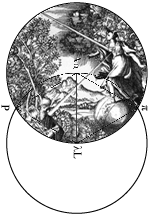 |
preserve. Journal of Architectural Education, Eds. Tricia Stuth and Ted Shelton, Vol. 72 No. 2. London: Taylor and Francis (October 2018).Traditionally understood as the post-operative process through which elements of the built environment – buildings, districts, landscapes – attain cultural significance, the discipline of preservation continues well-established modes of engagement: the critical consideration of, and advocacy for, cultural artifacts through close evaluation and written/drawn support as well as the stabilization of those artifacts through often ingenious technical means. Yet, preservation’s umbrella is growing, with the expansion of the discipline occurring on several fronts. The first of these expansions is, it might be argued, nearly as old as the discipline itself; the broadening definition of what merits consideration. While previous generations grappled with whether such “unorthodox” artifacts as utilitarian structures, Googie architecture, or even Modernist works were worthy of preservation, we now ask the same of the ephemeral. For example, how do we think about pollution as an unintended human mark? How do we ascribe value to the night sky, which is not shaped by human hands but rather by the meanings that human cultures attach to it? Meanwhile, shifts in the way architects think about the material and energy regimes associated with the things they create have begun to elongate the time periods under their consideration – in some cases drastically so. When a technology as simple as cladding is understood as dissipating energy gradients in service of the work the building is performing, have we arrived at a point where buildings presuppose their own preservation? Are buildings becoming Ships of Theseus intended to allow material/energy flows to wash through them over millennia and, if so, how does one solve this paradox of preservation? Still others are actively questioning the modes and tools of preservation practice, exploring the power of dance, installation, sound, and other non-traditional means to preserve. By overlaying event on space do these practitioners cast artifacts in a different light and engender a new appreciation of them? Surely these experimental preservationists share an affinity with many of those who view architecture primarily as a cultural practice and who, calling on a habit of mind long established in preservation, often find themselves trading in the currency of time rather than that of form. The Journal of Architectural Education, Issue 72:2 seeks Scholarship of Design, Design as Scholarship, and Micro-Narratives that critically examine the shifting intellectual landscape of preservation. Has preservation truly overtaken us? Is it time to redraw and/or erase disciplinary boundaries between preservation and architecture? What do we undertake when we preserve, by what means is it accomplished, and at what moment(s)? Submissions may include work that examines the history and theory of preservation with respect to these changes, describes emerging paradigms in preservation, or proposes pedagogical approaches or practice methods that interrogate the changing nature of the discipline. |
